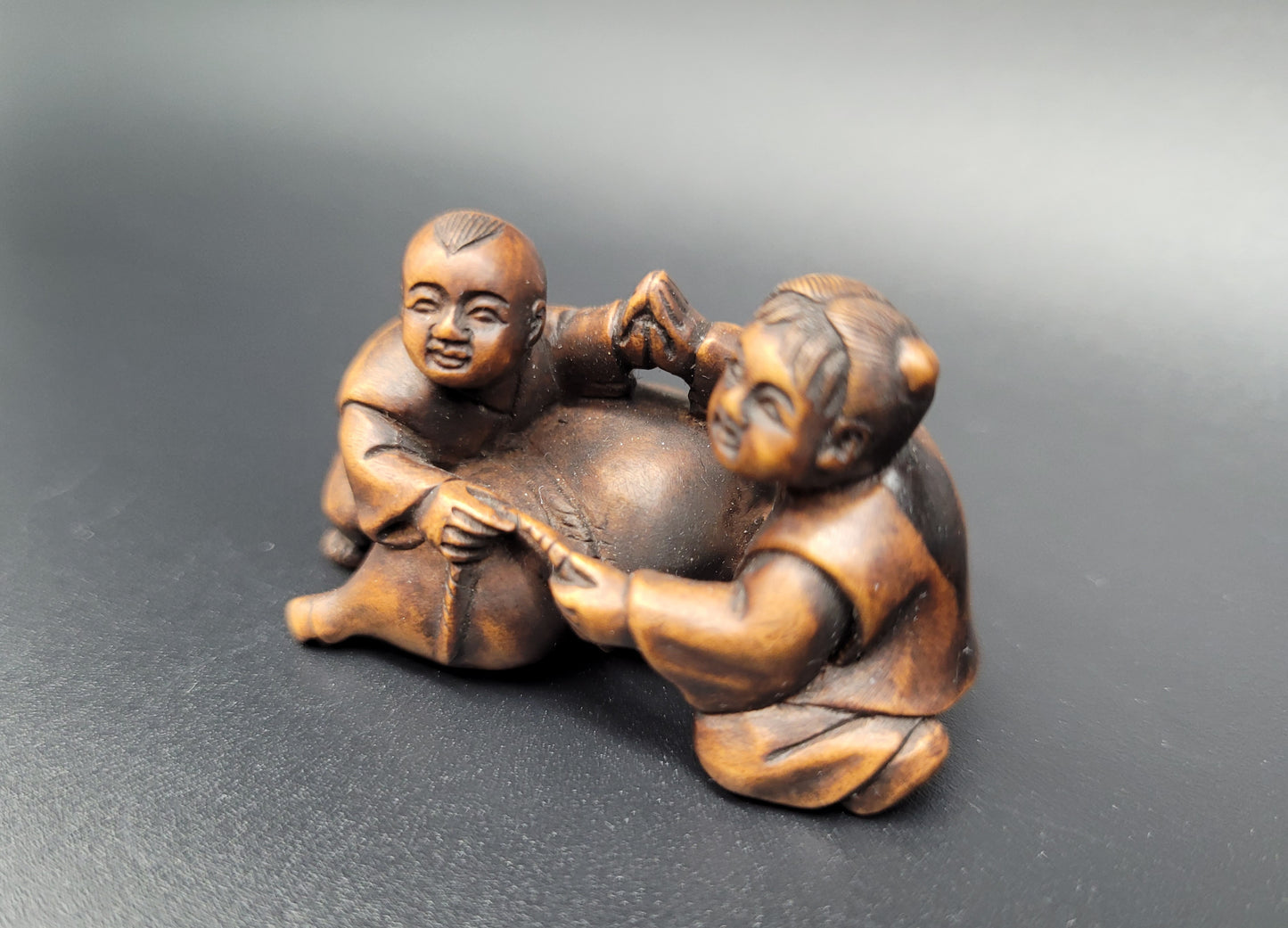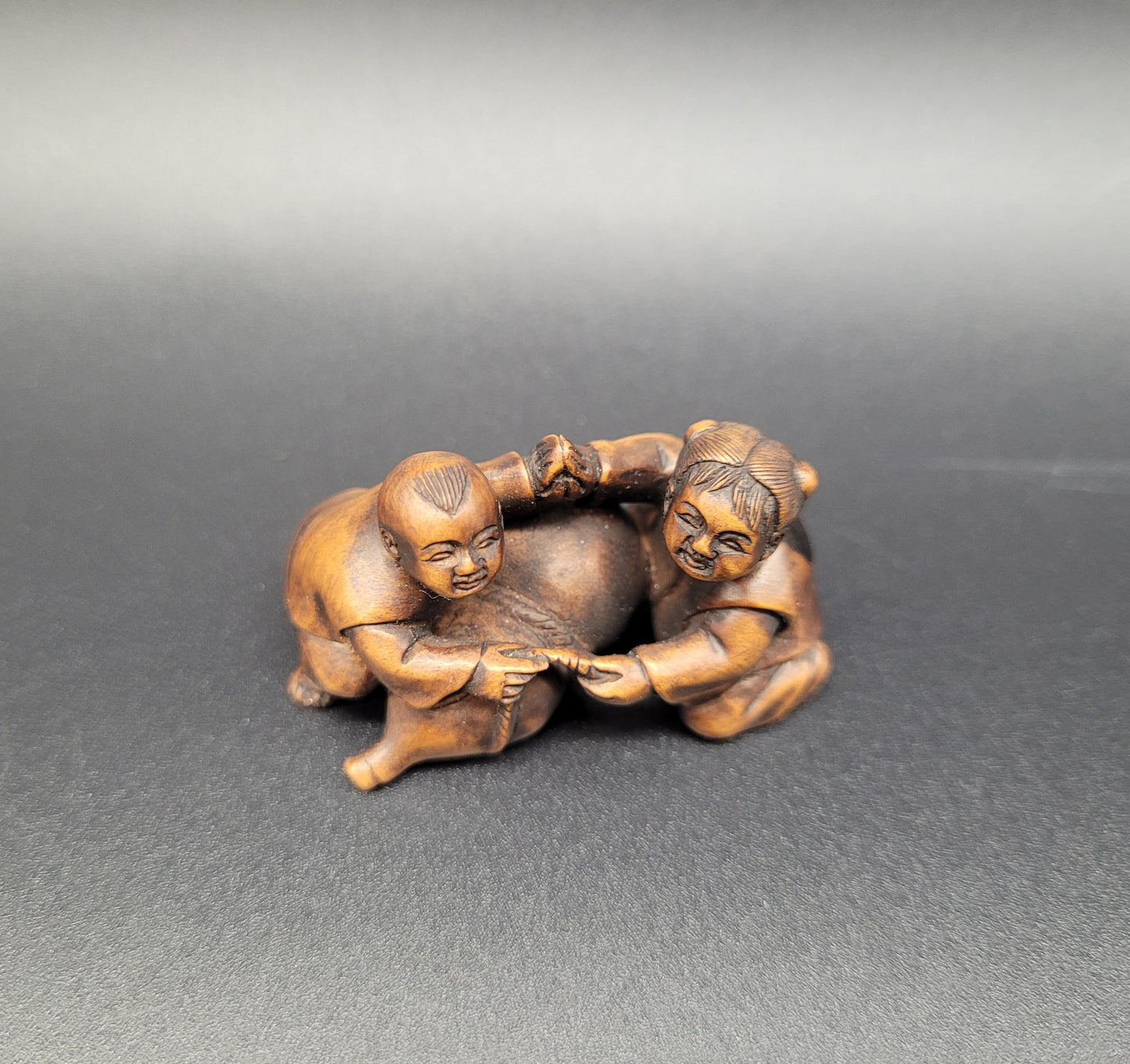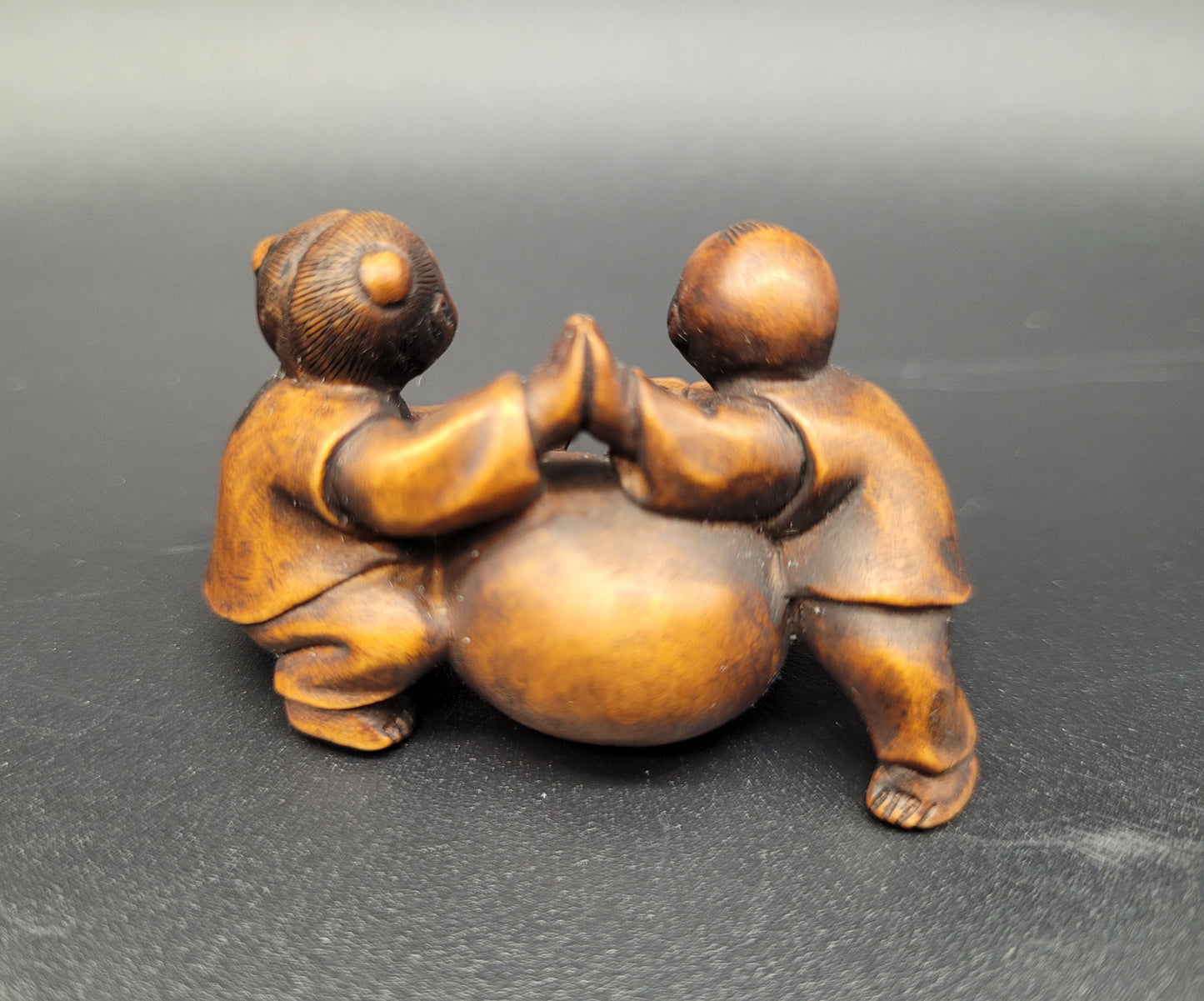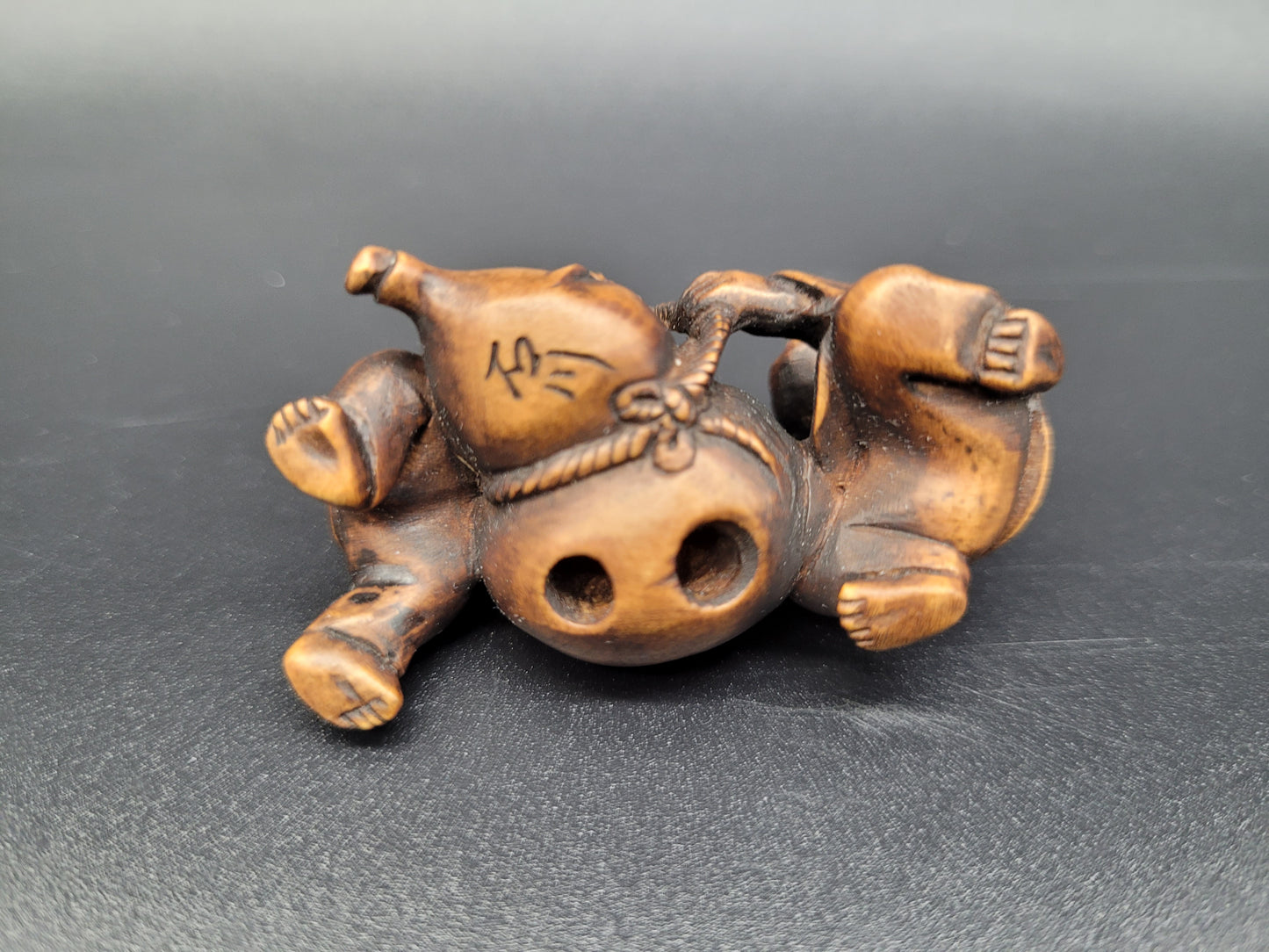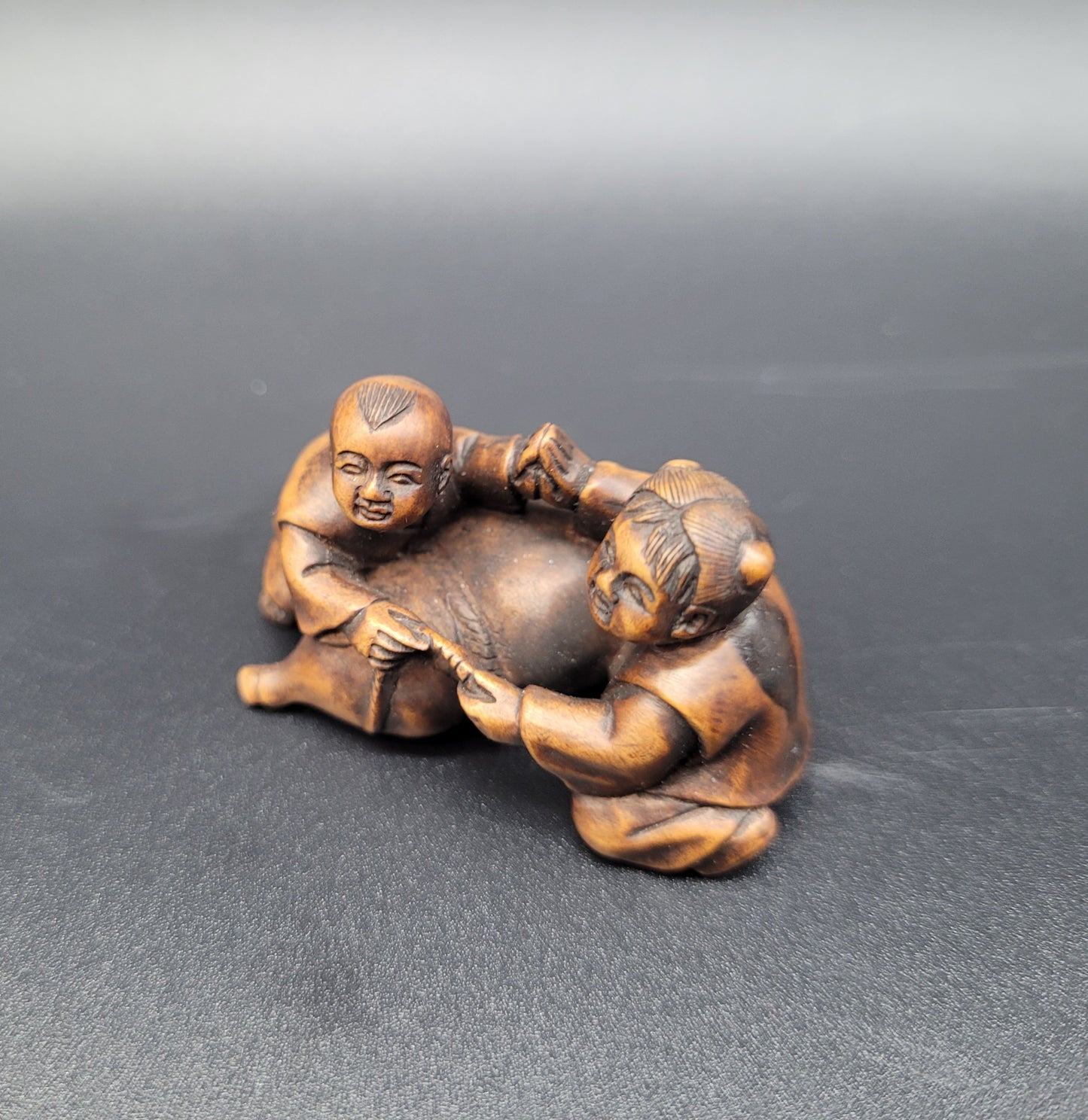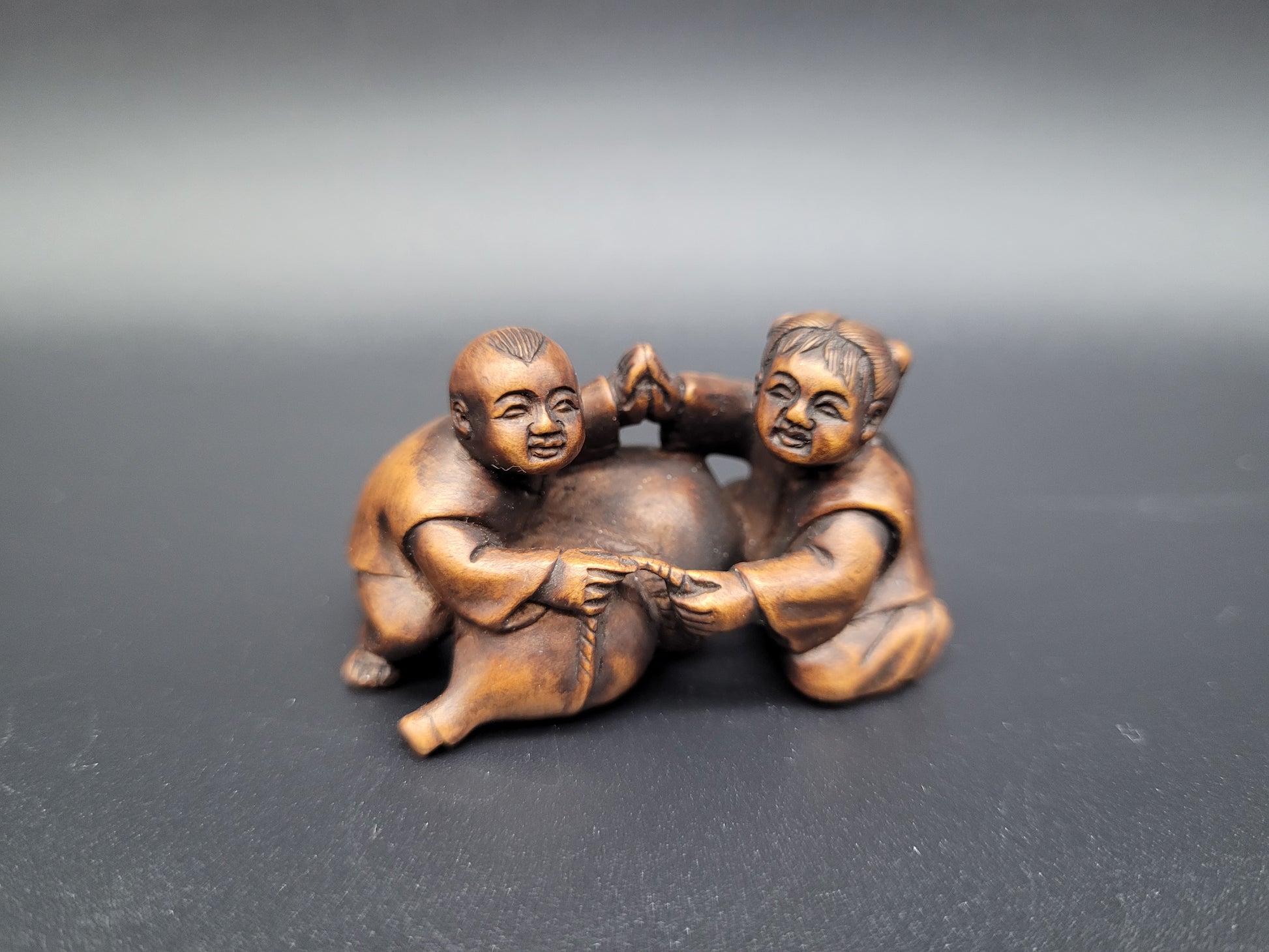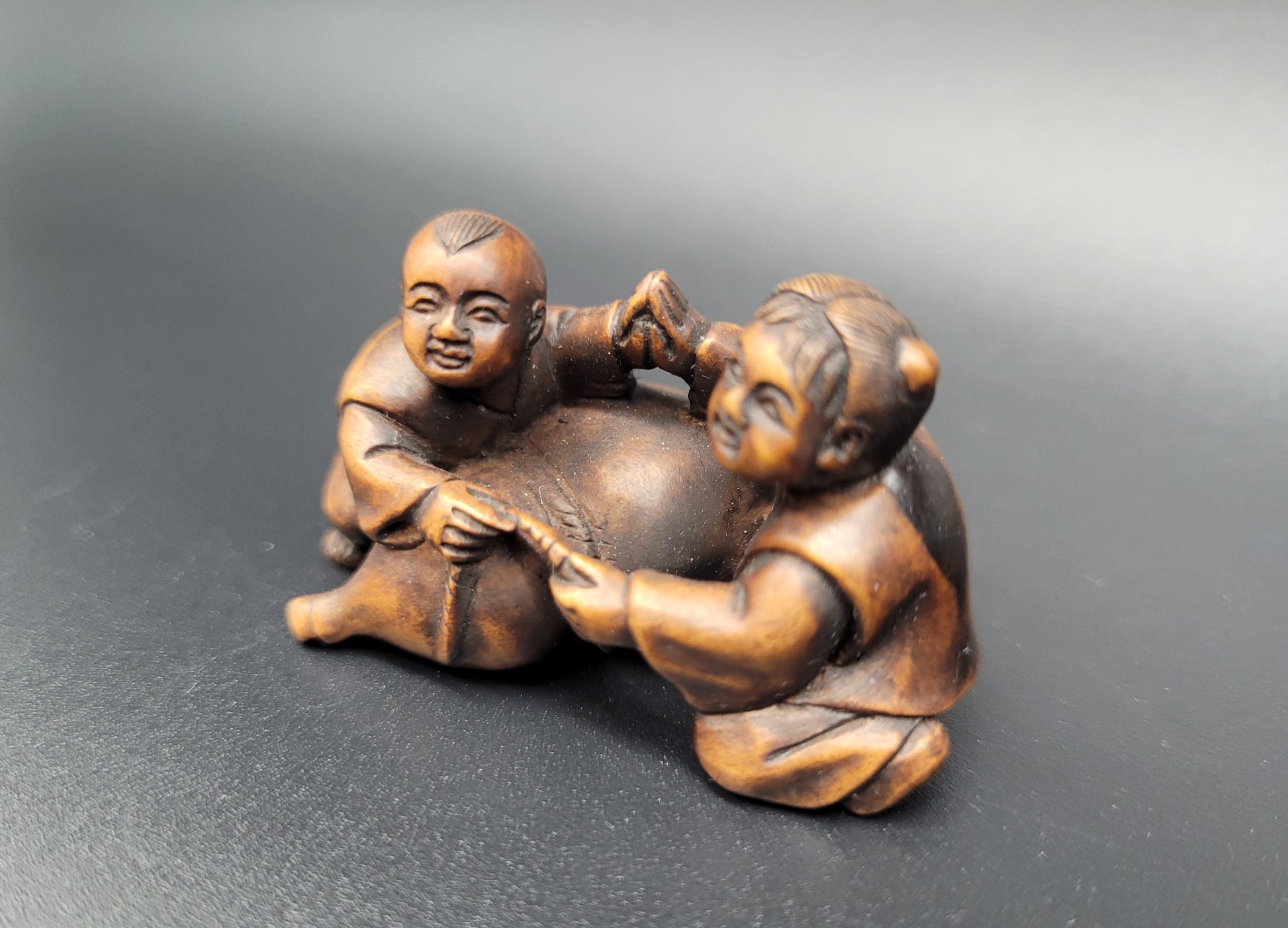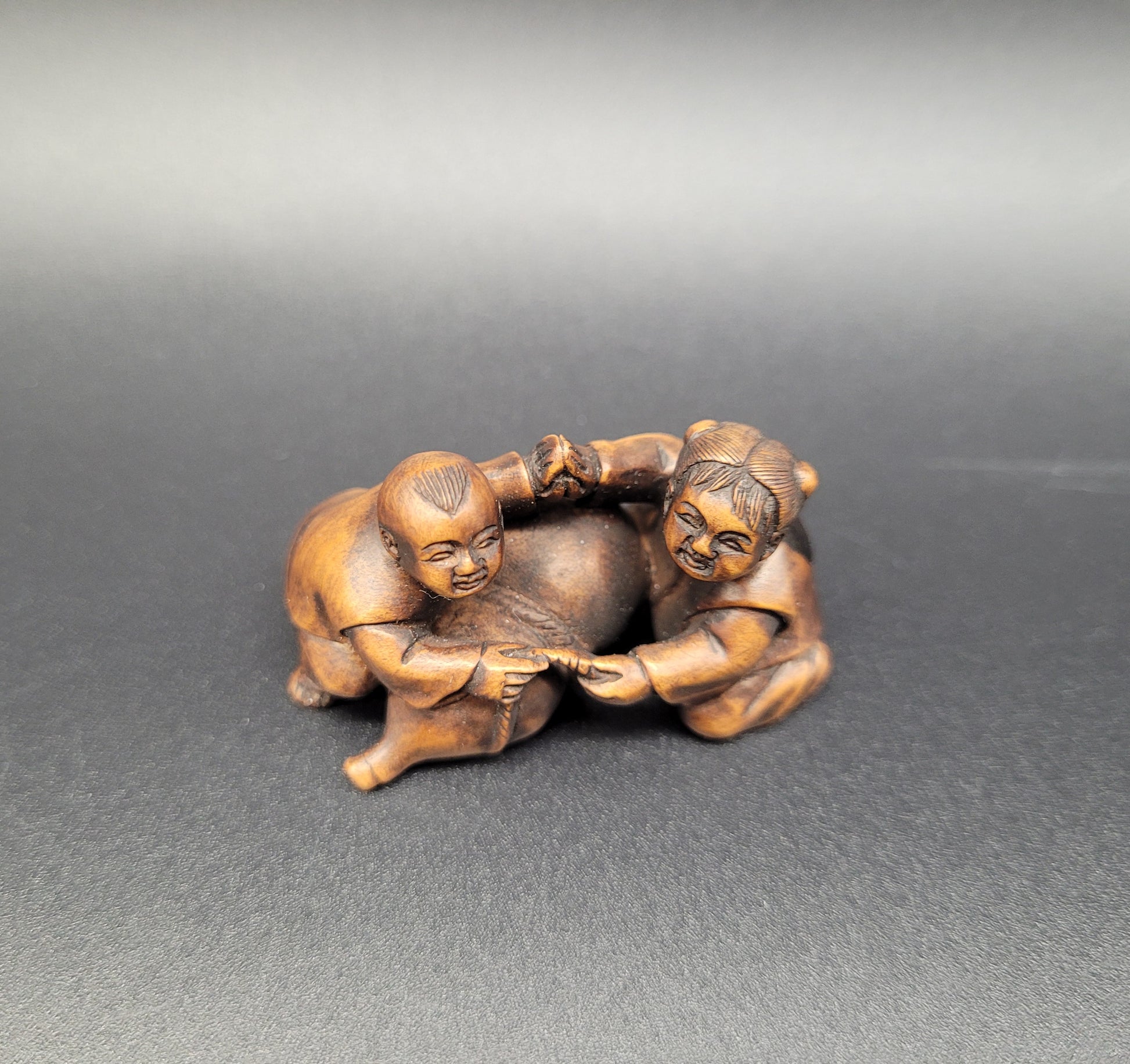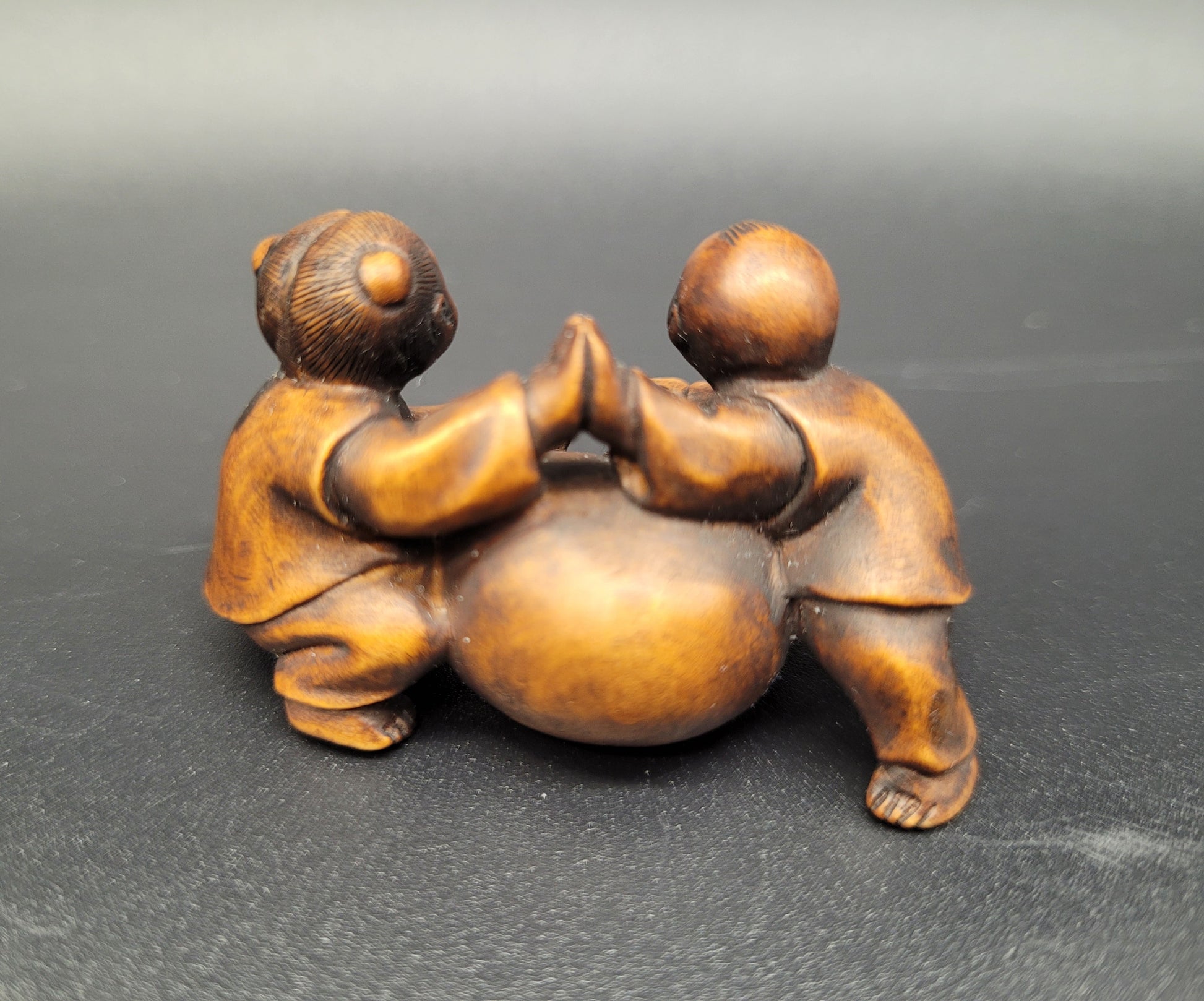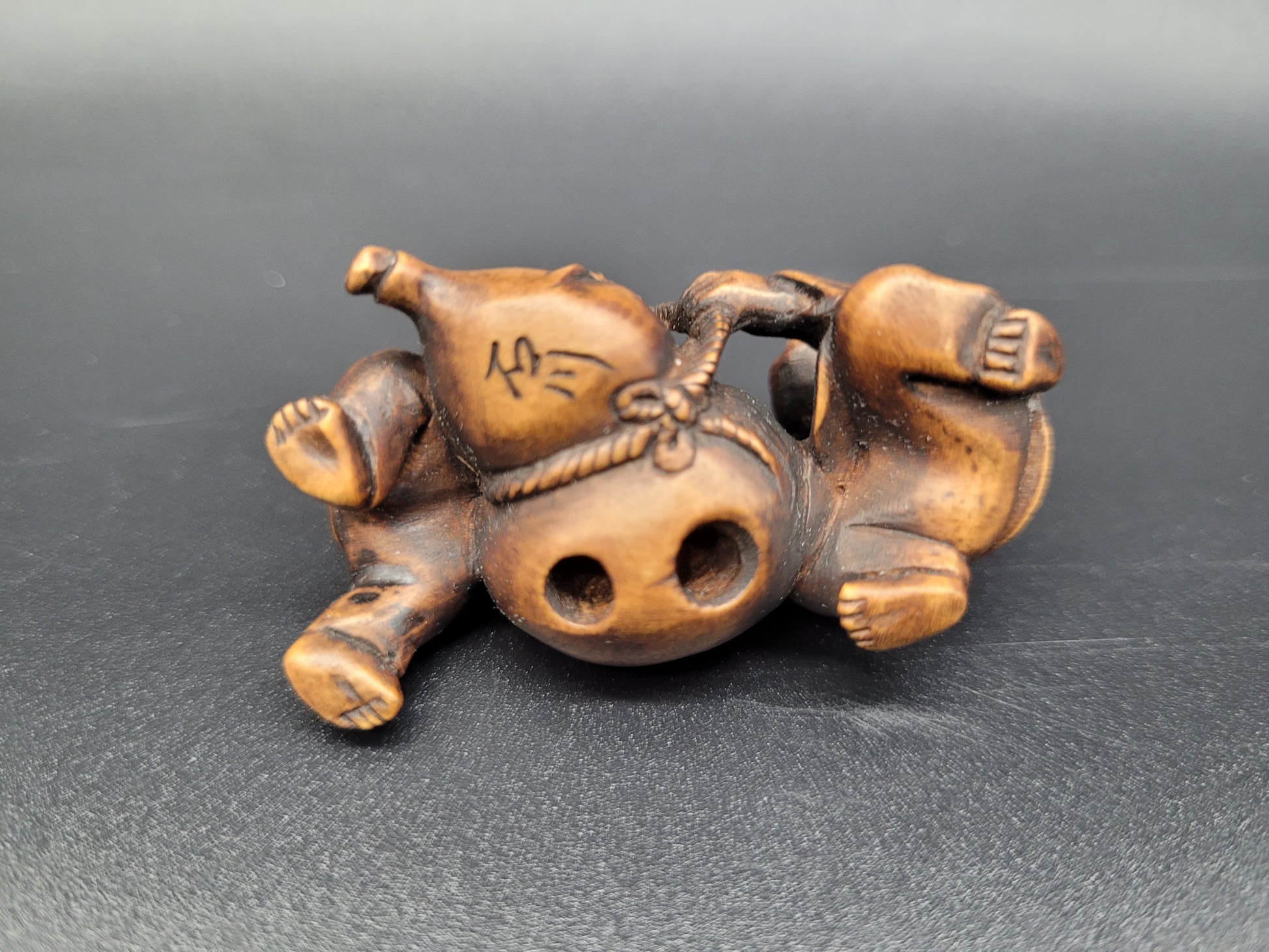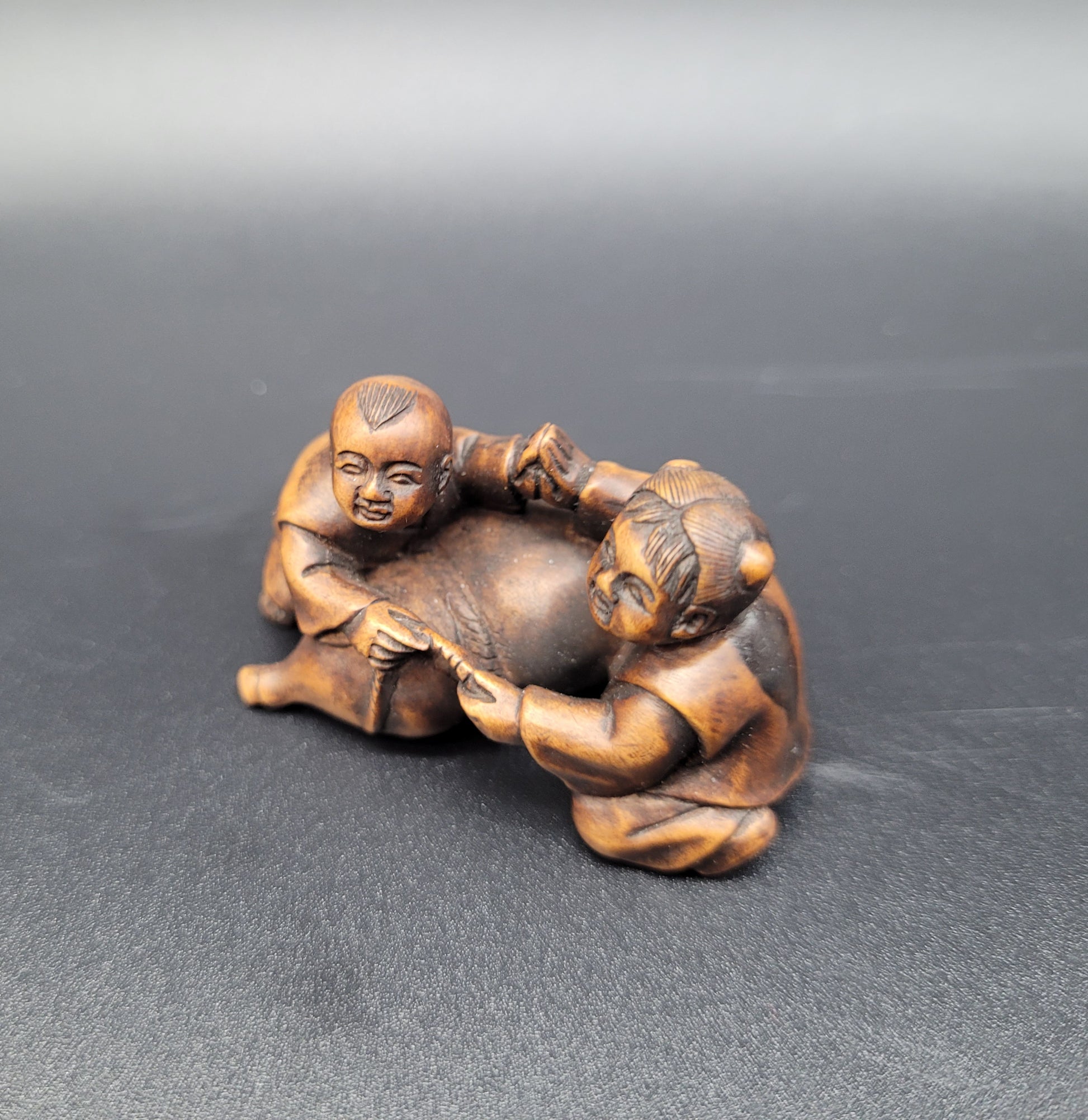Century Antiques
Antique Japanese EDO Period hand-carved wood Netsuke 18th Century
Antique Japanese EDO Period hand-carved wood Netsuke 18th Century
Couldn't load pickup availability
EDO, Late 18th Century, Japanese Wood Netsuke: WATER CARRIERS
Late 18th Century, nicely hand-carved wood Netsuke depicting a brother and sister carrying a double gourd full of water
Very nice stylized touches characterizes this netsuke made during the EDO Period of Japan.
Signed By The Artist
Amazing Attention To Details
This Netsuke has a rich patina from wear and handling and has given it a very smooth and shiny surface, with very pleasant tactile qualities.
Length 5cm
Height 3cm
Any Questions Welcome
WE SHIP WORLDWIDE !!!
Antique Japanese Netsuke
Like all art objects of great worth, netsuke distill the essence of a specific time and place. Worn as part of a traditional Japanese man’s ensemble from the 17th-century onwards, the netsuke’s purpose was hyper-specific, and its functional simplicity lent artists unlimited freedom to constantly redefine what it could be.
Formally, netsuke have few requirements: they must be small, they must have holes through which to pass a single cord, and they must have no protuberances that could damage one’s kimono. Everything else is left to the carver’s imagination.
As such netsuke differ in style, subject and material as widely as the personalities of their makers, and they are consequently supremely collectable.Netsuke emerged as a practical solution to dressing in 17th-century Japan. ‘Men’s kimonos didn’t have sewn-up sleeves — they were completely open, front and back, and that meant that the sleeves couldn’t be used as a pocket, as they could in women’s kimonos,’ Goodall explains.
To carry things suchas tobacco, medicine or other necessities, men hung stylish inro and other vessels from cords looped under and behind the wide sashes that held their kimonos in place. At the other end of those cords, men fastened small, ornamental objects as counterweights; those objects evolved into netsuke.

